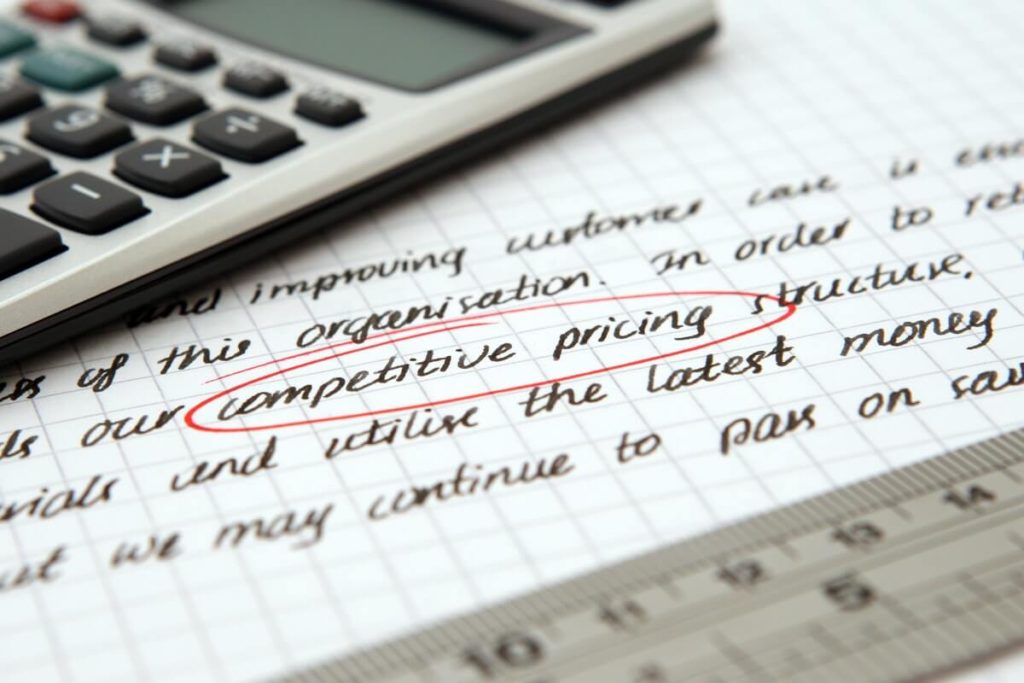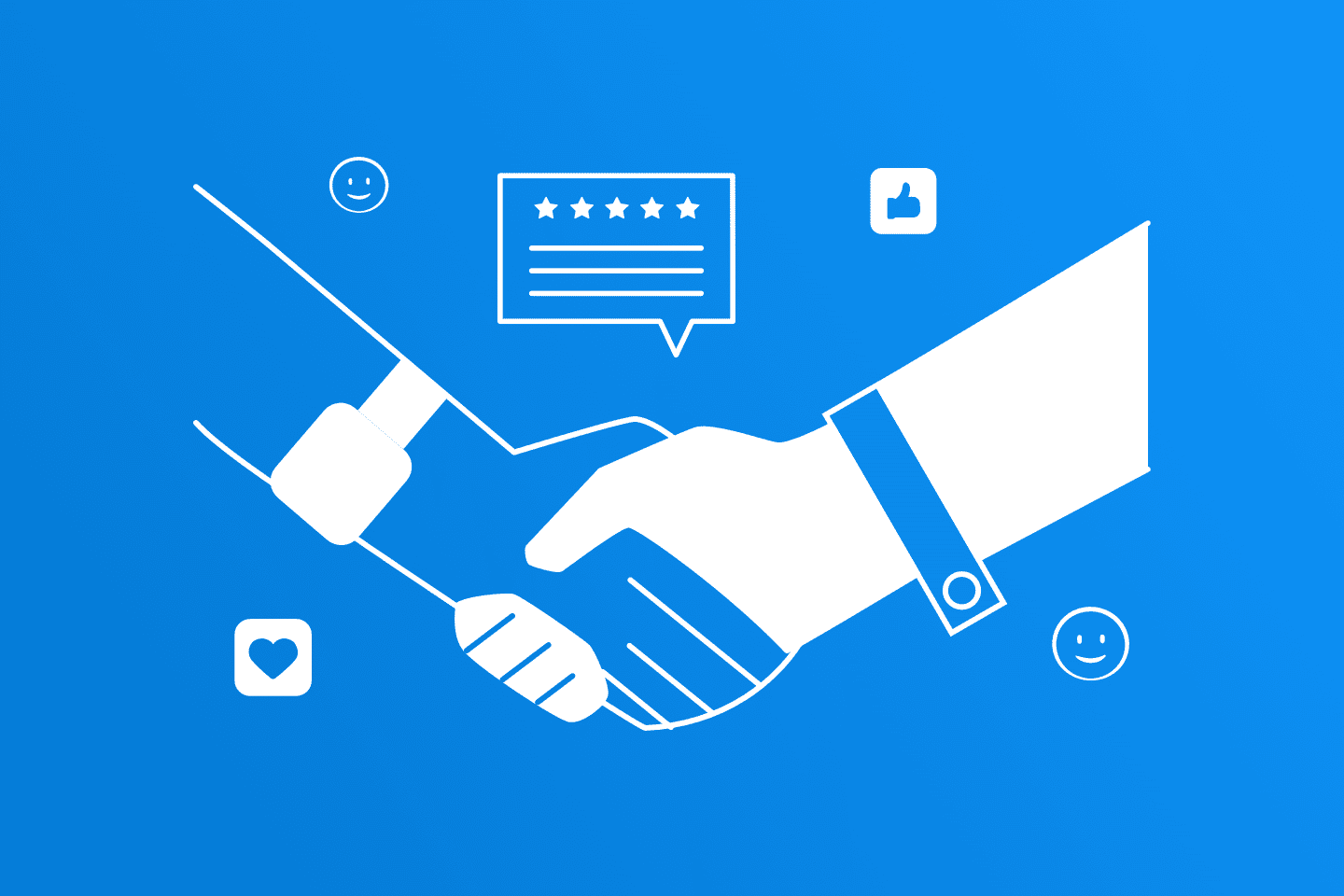Loyal customers are worth their weight in gold.
According to KPMG, good customer relationships provide great benefits for a brand:
- 86% of loyal customers will recommend the brand to friends and family
- 66% are likely to write a glowing review following a positive customer experience
- 46% will stay loyal even if they’ve had a poor experience
So it’s no wonder companies invest a bunch of time, money, and expertise into building strong, long-term relationships with customers.
With that in mind, here are seven ways you can improve customer relationships by leveraging the power of your CRM…

Choose The Best CRM For Your Needs
It may sound like an obvious point, but the fact is no two CRMs are the same.
Each has its own strengths, weaknesses, and quirks that make it more applicable to certain types of businesses.
You can get CRMs for small businesses, CRMs for e-commerce brands, CRMs for solopreneurs, and generalist solutions that aim to do a bit of everything.
Choosing the platform that most closely aligns with your needs will give you the best chance of building customer relationships that stand the test of time.
Another key point here: remember your CRM system doesn’t exist in isolation.
Chances are, you use a host of other tools, from marketing automation software to time-tracking, project management, and productivity solutions. It’s important your chosen CRM “plays nice” with all those other platforms.
Otherwise, your team will spend a big chunk of their time on low-value, labor-intensive data entry.
About 17.9% of sales reps’ time is spent using CRM software, so you want that time to be as impactful as possible.
Involve Customer-Facing Teams In CRM Buying Decisions
Before you decide on a CRM system, be sure to get your internal customer-facing teams involved.
After all, they’re the people who will be using it, so it’s in your best interests to make them feel empowered and that their opinions are being considered.
Remember: software rollouts most often fail when the new tool goes against the grain of how end users do their jobs.
If your CRM forces your marketing team or support agents to add a whole new task — or a series of tasks — to their working day, don’t expect them to relish using it.
In the worst-case scenario, a CRM that’s too confusing or lacks the right functionality could actually end up hampering your customer relationships as agents struggle to track down the right information or access previous conversations.
Instead, choose a system that enhances current workflows. And the best way to do that is to get signoff from end users.
Segment Your Customer Data
Effective customer segmentation is vital to building and maintaining mutually beneficial customer relationships.
Segmenting customers into groups, based on factors like demographic data and buyer behavior, allows you to craft highly personalized messaging. And that’s important, with Google research showing that:
- 90% of leading marketers believe personalization significantly contributes to business profitability
- 61% of consumers expect brands to tailor experiences based on their individual preferences
Doing segmentation well starts with cleaning and enriching your CRM data.
That means purging email addresses that are no longer active, removing or correcting typos and other errors, and ensuring all data is entered consistently.
Get into the habit of regularly cleansing your CRM data, ideally at least once per quarter, or more often if you attract high volumes of new customers (i.e. hundreds or thousands of new leads or customers every month).

Once your data is “clean”, you can start to build relevant segments.
The first step is to consider the types of people in your audience:
- How old are they?
- Where do they live?
- What personal and business challenges are they facing?
- How does your product make their life easier or help them achieve their goals?
- How much buying power do they have? (i.e. would they be solely responsible for buying your product, or would they have to persuade a group of senior decision-makers to sign off on the deal?)
- How much knowledge do they have about products like yours?
Let’s consider the example of a fast-growing fashion brand.
One segment of its audience is made up of young consumers who are desperate to keep up with the latest trends but often find themselves short on money.
By creating that segment, our imaginary brand can craft highly relevant messaging focusing on things like:
- Buy-now-pay-later services
- Student discounts
- Free delivery
Remember: the better-targeted your messaging, the stronger your customer relationships will be.
Analyze The Customer Journey Using Data Analytics
A CRM system allows you to gather together all your customer information and join the dots between all your other tools.
In turn, this gives you the power to analyze vast swathes of data to ensure you are targeting each person with the most relevant and impactful messaging, based on their position in the customer journey.
For instance, data might show you that once a prospect has visited your website twice in the last week, they’re likely to buy in the next 48 hours — so maybe it’s a smart time to target them with a multi-buy offer.
Or perhaps it tells you that following up with cart abandoners within 60 minutes gives you the best possible chance of persuading them to complete the transaction.
Beyond this, CRM analytics and reporting allow you to measure the performance of your sales, marketing, and support functions, and assess how each team supports the others.
If your support agents routinely receive questions on a specific topic, perhaps that’s something for your marketing team to address so people are better-informed before they buy.
The more transparent and helpful your systems and processes, the more likely you are to foster positive customer relationships.
Track Conversations Across Multiple Business Functions
Think about how many interactions take place before a customer has even decided to buy from you. For instance, they might have:
- Visited your website
- Signed up for your newsletter
- Followed you on social media
- Been targeted with your latest ad on YouTube
- Added-to-bag then abandoned the transaction
- Asked your customer service team a question
At every one of those stages, they expect consistent information and messaging. So, you can see how vital it is to track your prospects across each customer life cycle stage.
Imagine how it looks to a would-be customer if they see an ad promising free next-day delivery on their next order, only for them to reach your website and discover they don’t qualify. Or if they have to explain the problem they’re facing, in full, to multiple customer support agents.
That’s a guaranteed recipe for customer frustration.

When you don’t have access to the necessary information about customers and their accounts, you don’t just miss out on opportunities to upsell and cross-sell them — you risk causing irreparable damage to your customer relationships.
It also adversely affects the productivity of your employees, forcing them to waste time trawling through communications across multiple platforms to gather key context.
Your CRM system holds the key, enabling you to keep track of conversations across different channels and business functions, accessing everything from inbound telemarketing transcripts to email chains.
Constantly Seek Improvements To CRM Processes
Even if you’ve been using your current CRM system for years, chances are you haven’t fully optimized your processes.
You might encounter problems when customers hit a certain part of the user journey, or you might be struggling to generate ROI from a specific channel or marketing tactic.
Whatever the case, you should never be satisfied with the status quo. Regularly run small tests to improve performance, because the more effectively you leverage your CRM platform, the better your customer relationships will be.
Once you identify a potential improvement, try:
- A/B testing the improvement: Randomize which process your team uses and compare the results to see whether the “improvement” or the original process delivers the best results
- Making iterative improvements: Make frequent, small changes to assess their impact, using the results to plan future optimizations
- Implementing large-scale innovations: Sometimes, wholesale change affecting several elements of your CRM process are necessary to strengthen customer relationships
Use Your CRM To Improve Marketing Communications
Good customer relationships rely on sending your customers regular and meaningful communications.
After all, if a customer doesn’t hear from you for six months, it’s pretty unlikely they’re going to think of you when they’re next ready to buy.
However, what constitutes a “meaningful communication” will naturally vary from one brand to another.
It might also have different meanings across your various customer segments.

You might share product inspiration via your social profiles, offer practical tips and advice using weekly marketing newsletters, and promote product launches or sales through one-off email marketing campaigns — but how can you understand which are having the most positive impact?
Once again, your CRM can help.
Analyze the performance of each channel against clear KPIs to understand what “valuable communications” look like to your audience.
Bonus Tip
Want to learn more about customer loyalty and building longer-term customer relationships? Check out our guide to eight customer retention strategies that won’t overwhelm your team.
Wrapping it up
Attracting new customers is expensive, so it’s clearly in your best interests to focus on building strong customer relationships.
That way, you can increase loyalty and reduce churn, giving you more consistent sales and helping you achieve your business goals.
If you use our 7 tips to improve and sustain good customer relationships, that task will be easier and more consistent for you and your team.






